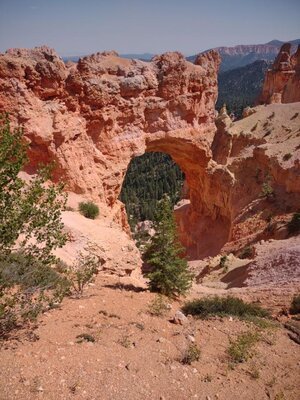National Park Tour, Part 2
Travel blog by Emily Pierce, PLS, CFedS
Today, I’m covering two days of thrilling (and hot) outdoor activities in our National Parks. The first day, we were “living on the edge” at Kanab Utah. This is the site of the Moqui Caves, which features a roadside museum that started as a local tavern and dance hall.
Moqui Caves
Moqui Caves & Coral Sand Dunes
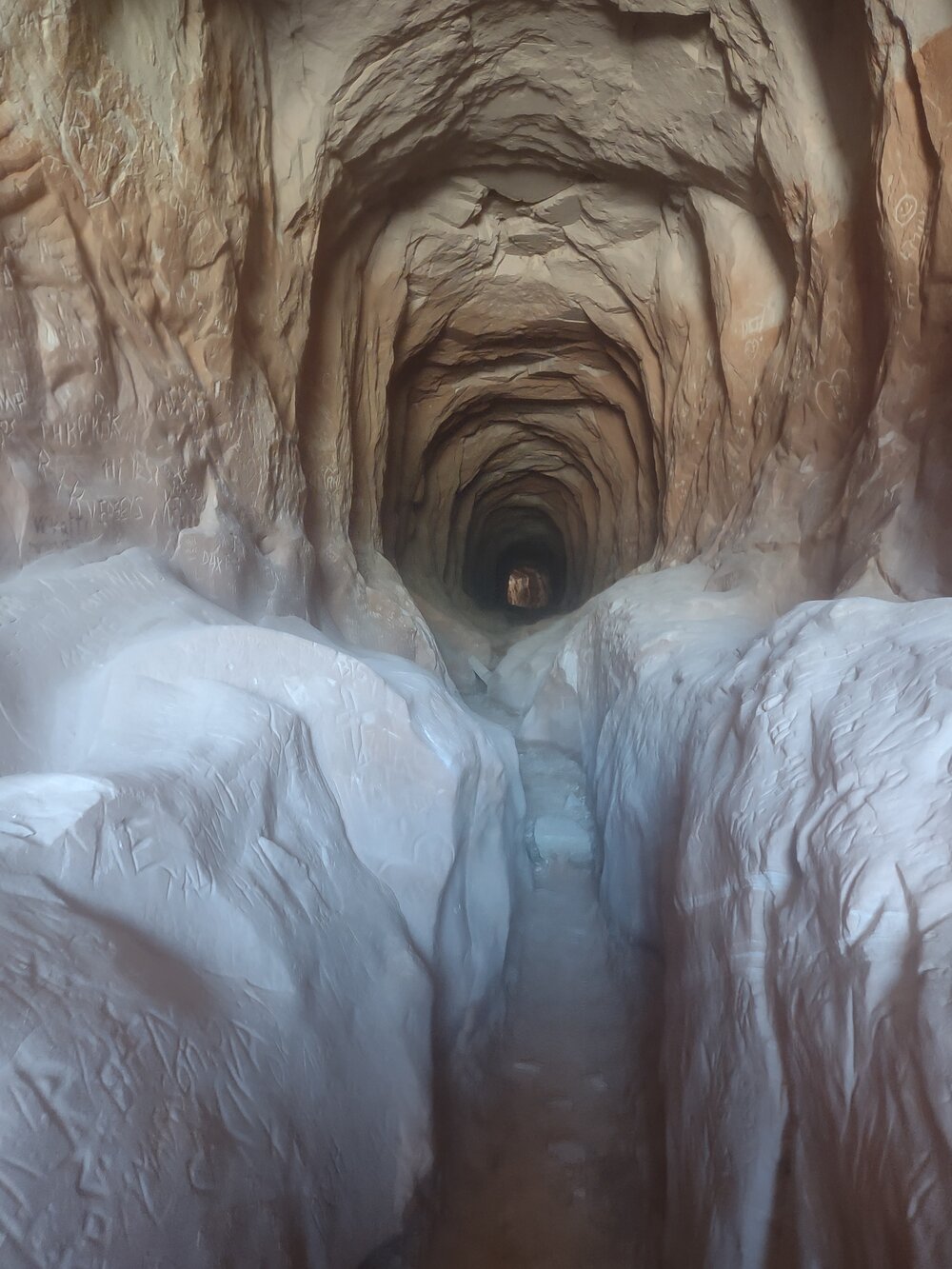
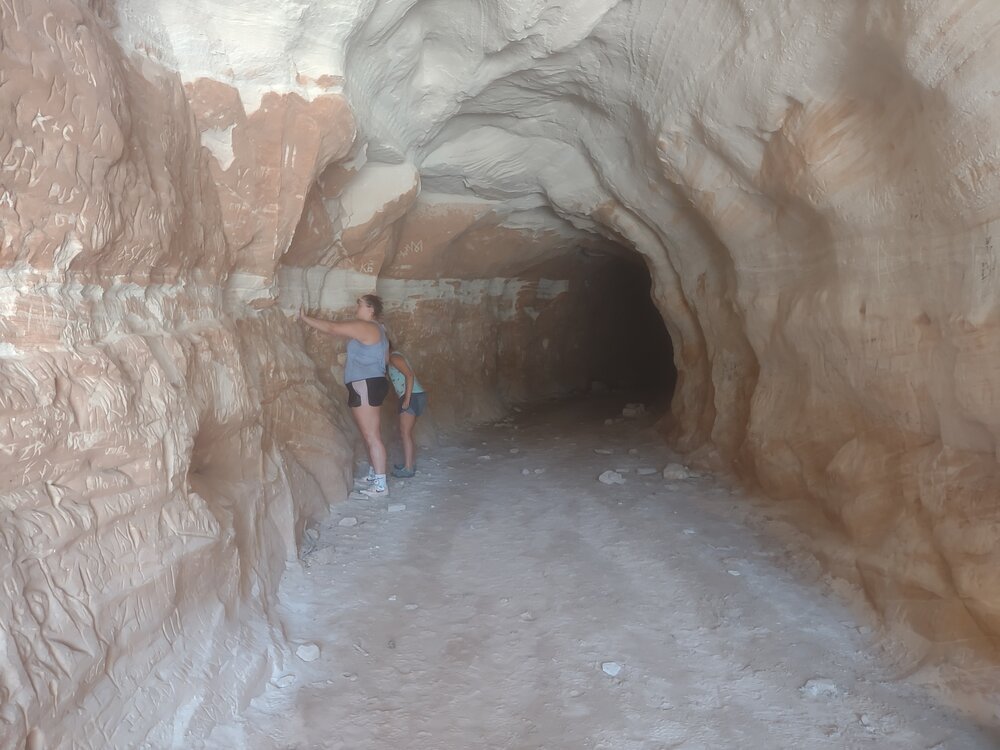
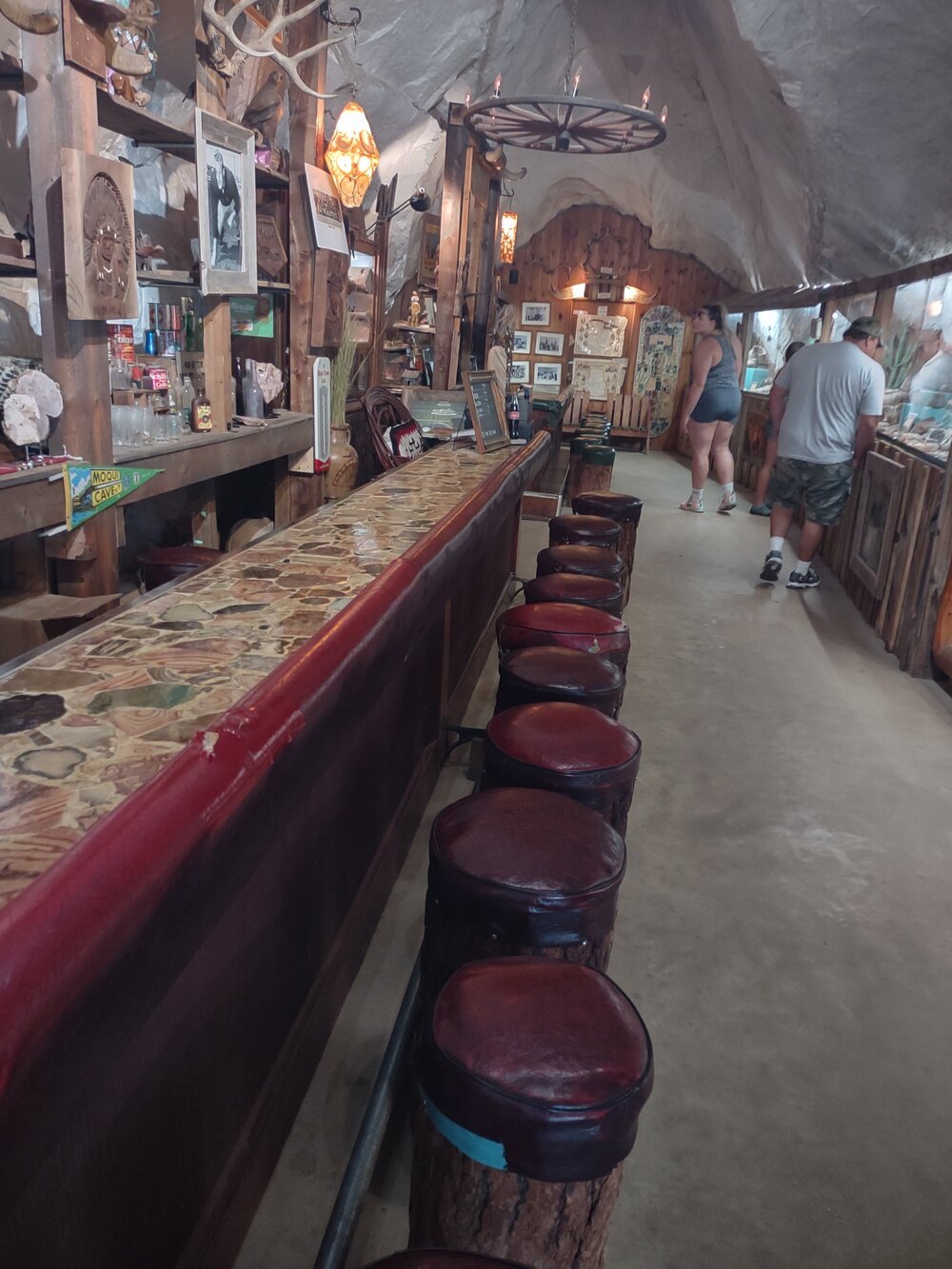
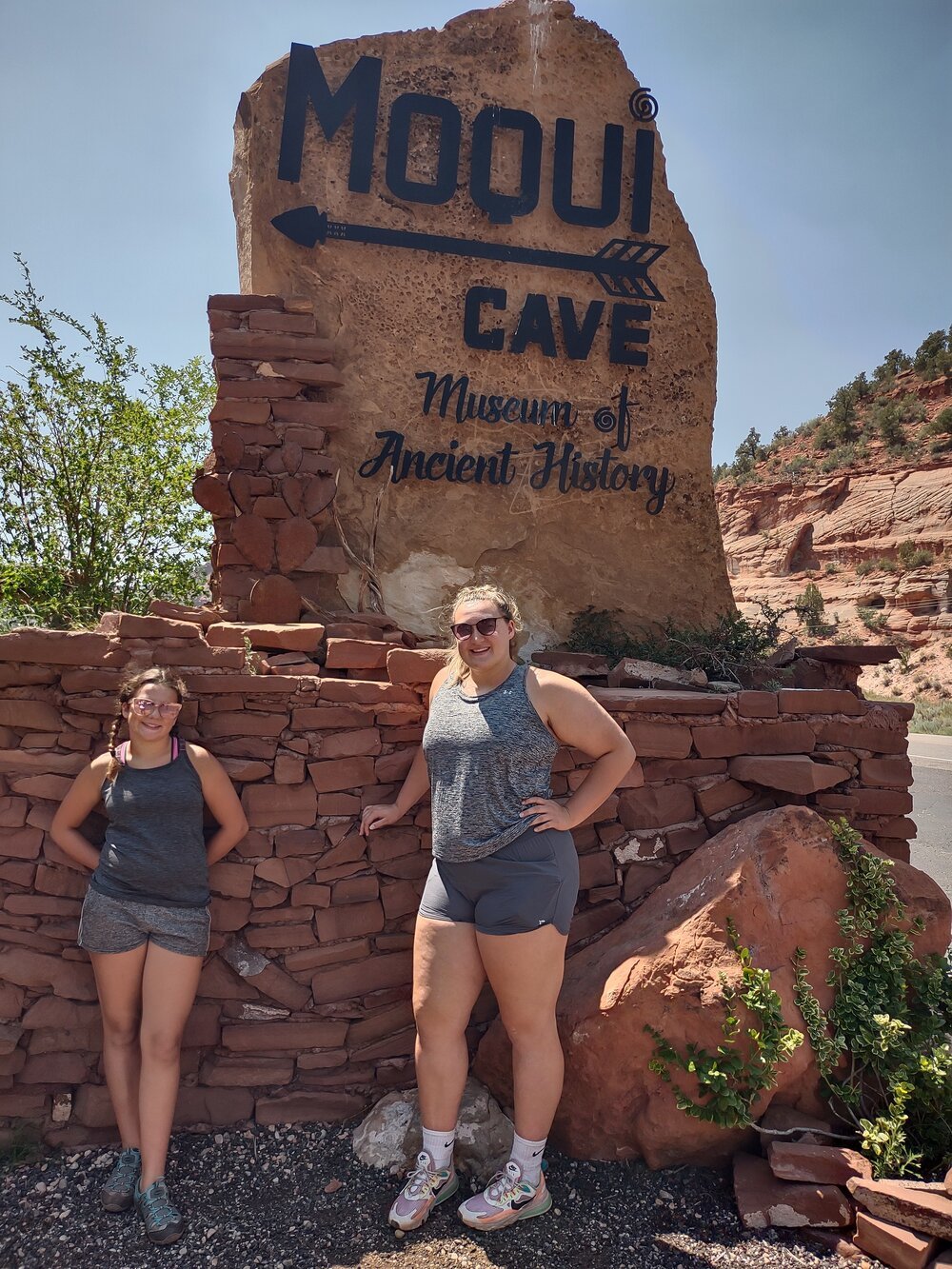
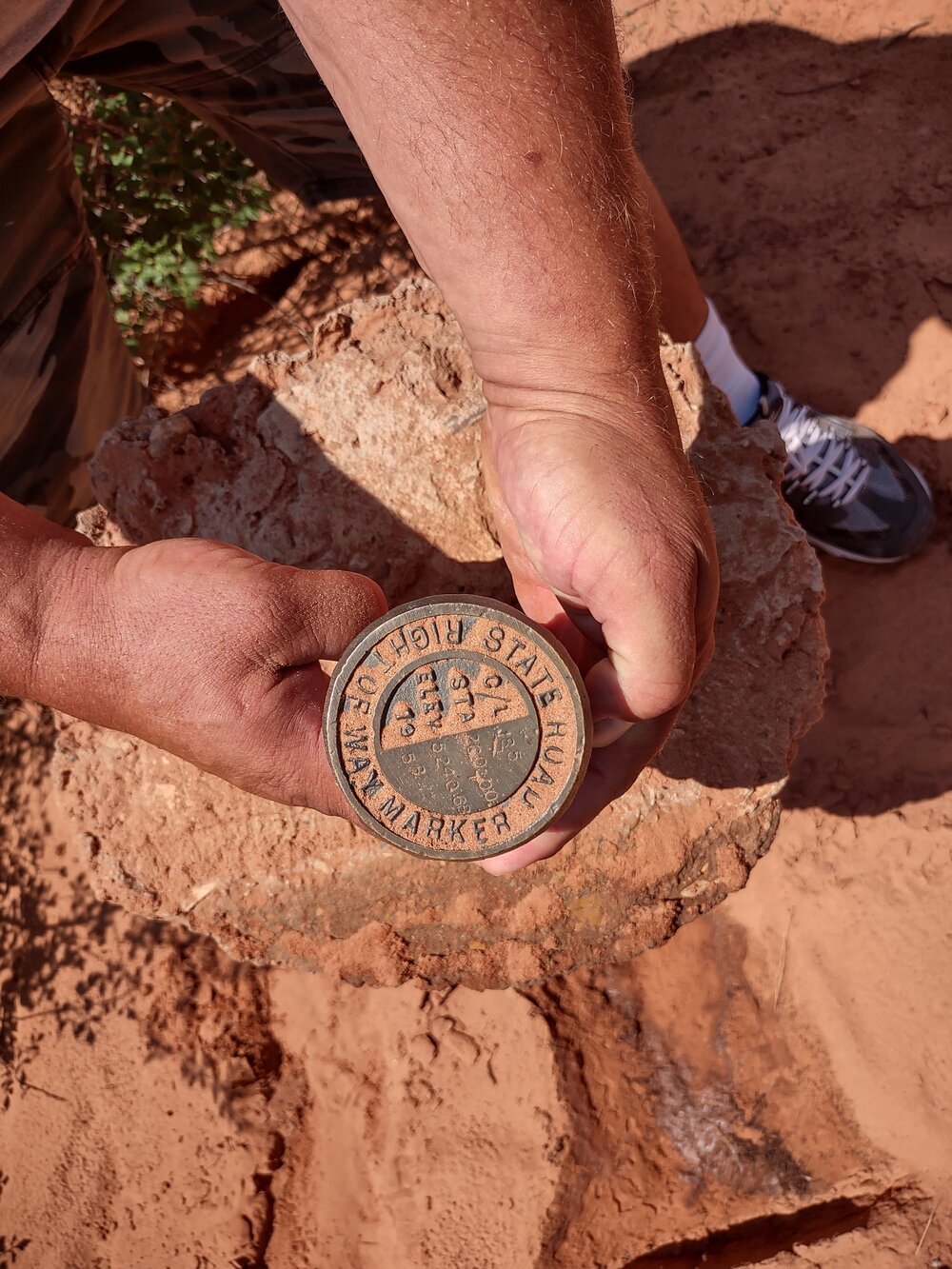
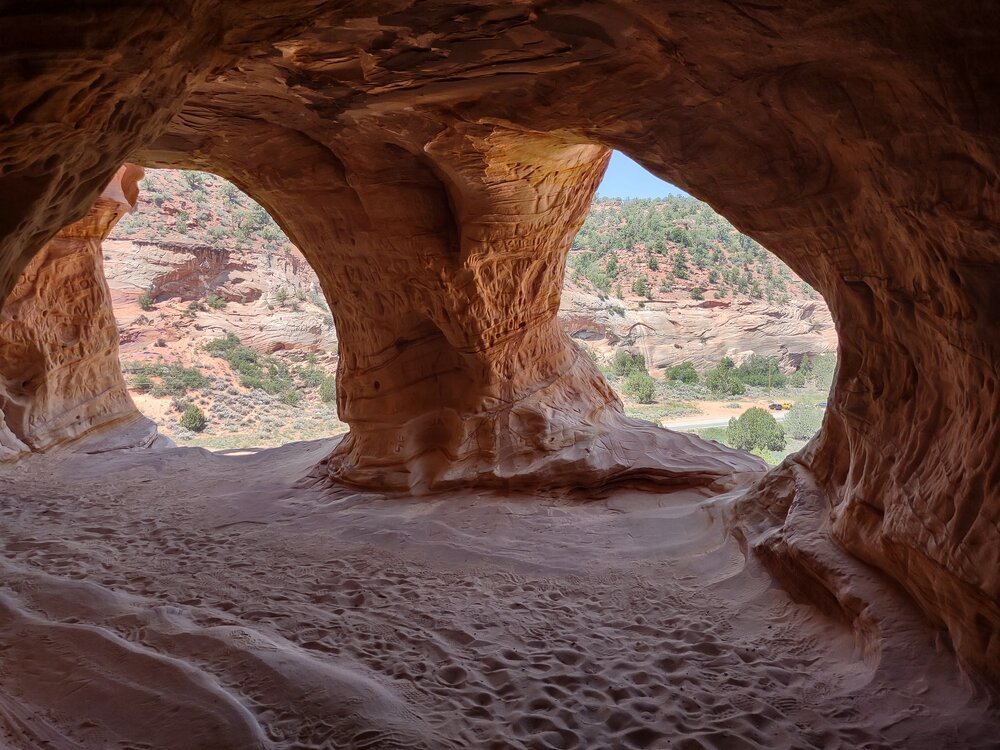
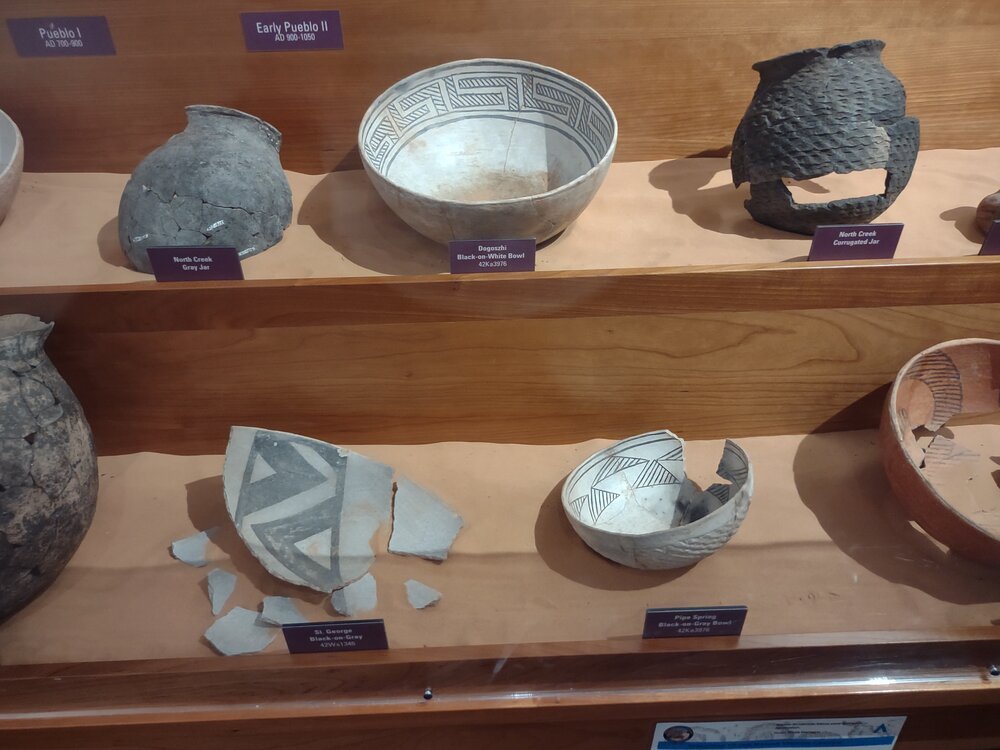
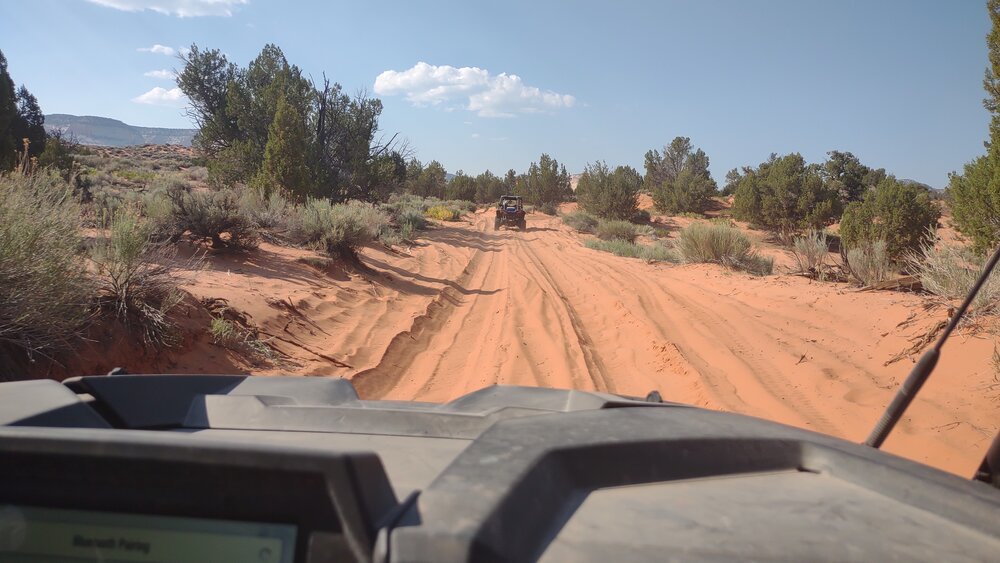
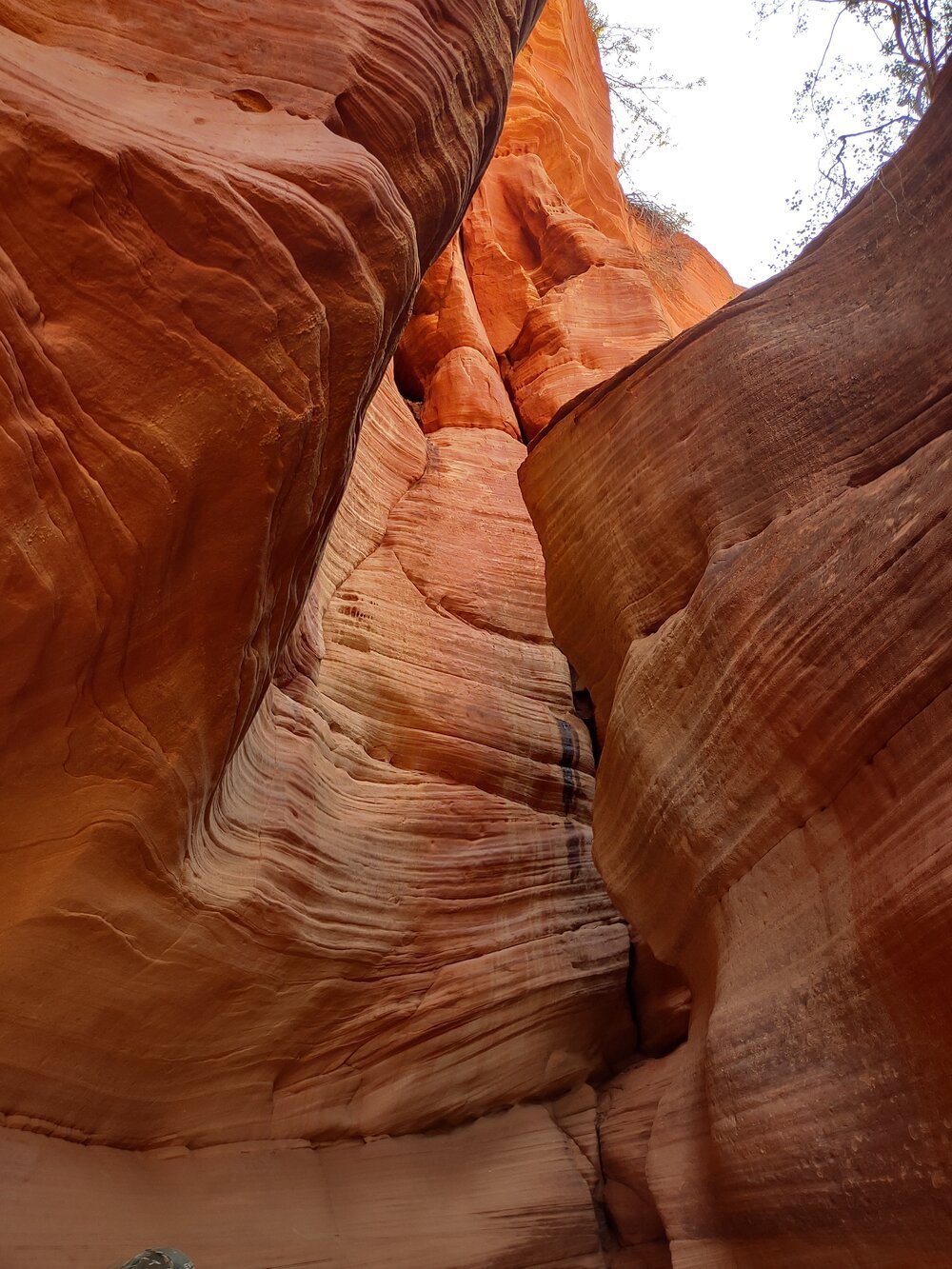
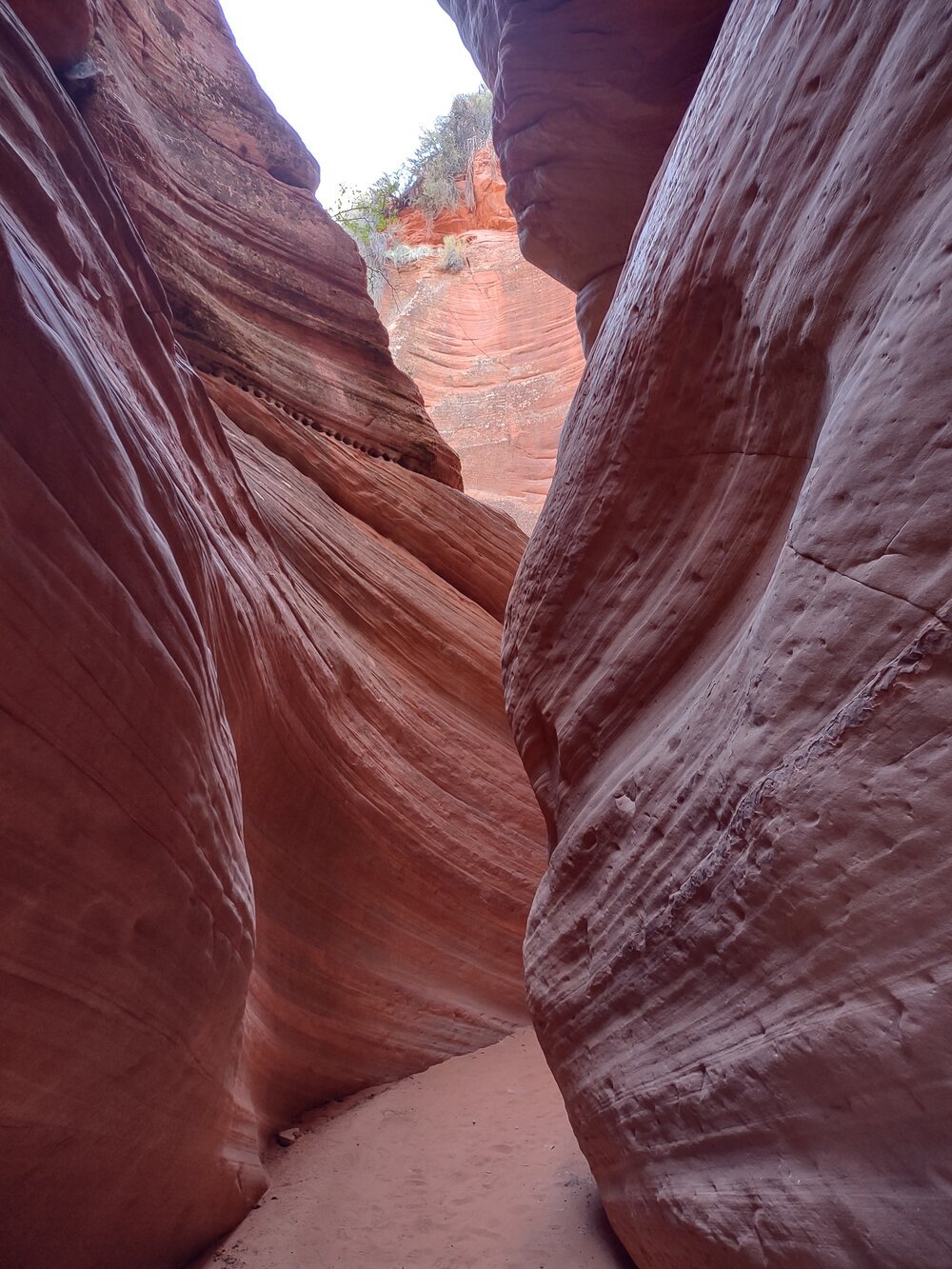
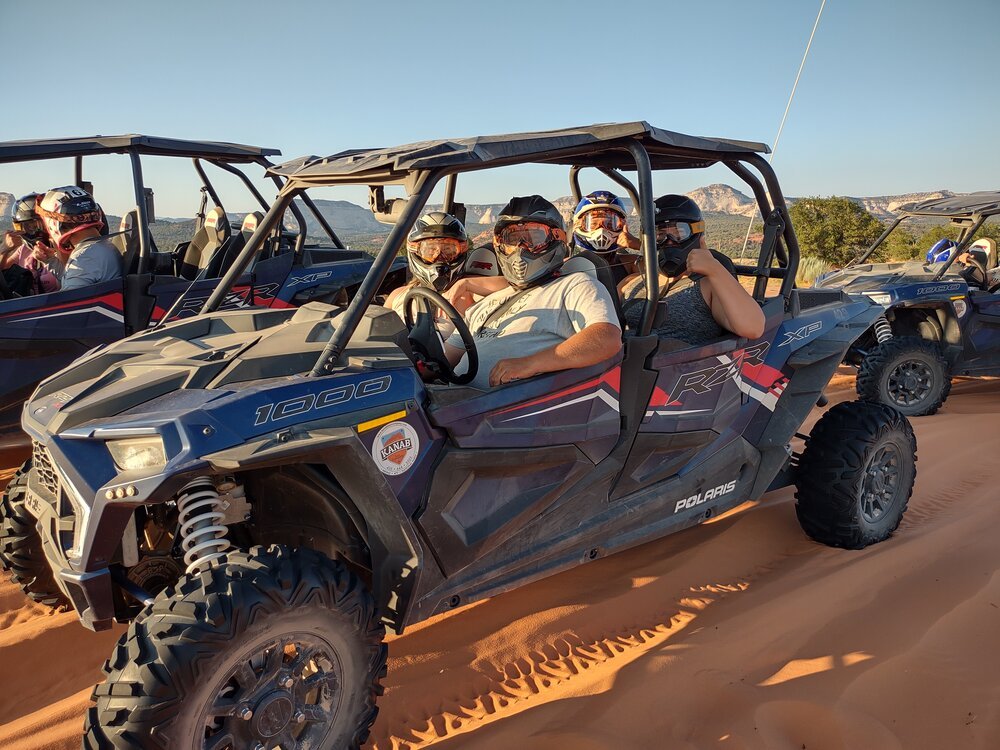
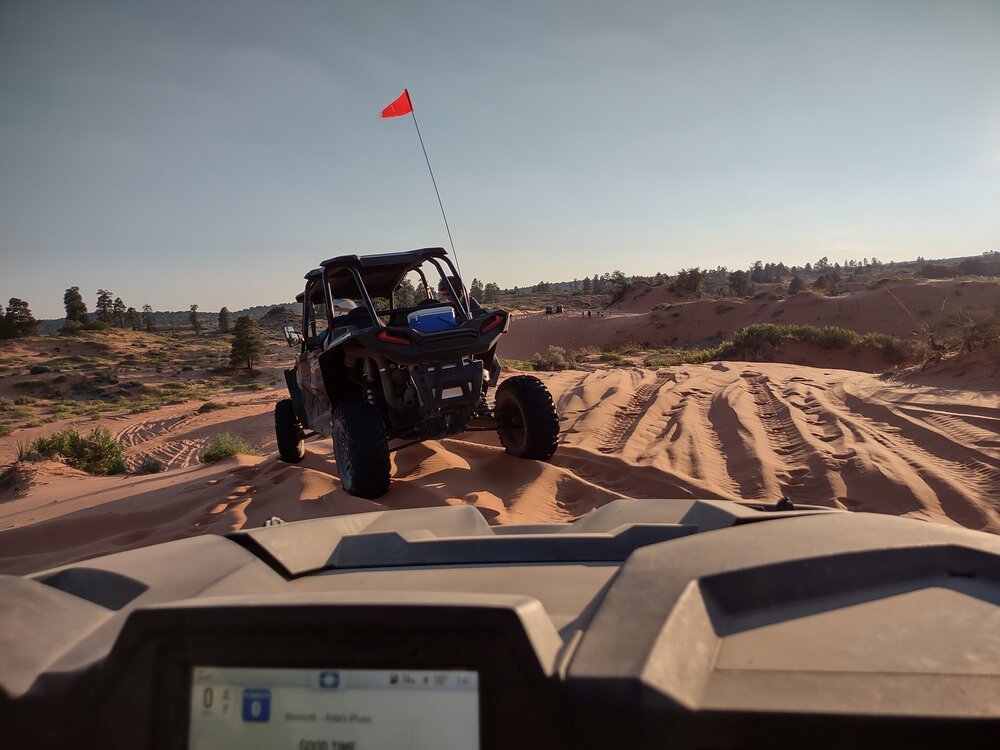
The late Garth and Laura Chamberlain purchased the cave in 1951 and turned it into Southern Utah’s first dance hall and bar. During the week, food was served and the fully functional bar was a hit, especially when a live band came to play on Friday and Saturday nights. It became a place where many Hollywood regulars stopped by to cool off (and have a cool one) when they were in the area filming western movies. It had the additional allure as one of the few places to serve alcohol in Utah at the time. It is always a comfortable 65 degrees in the cave making it an ideal place to escape the heat. I know I would make it a regular stop!P
Nowadays, it serves a small museum with minerals and local Moqui Indian relics. The original bar and bar stools are still there, so feel free to order a cold bottle of root beer or sarsaparilla.
Just down the road, less than a quarter mile, are where the actual Moqui Caves perched on top of a cliff. There isn’t a real trail there, so a person needs to scale the side of a rock face to get there. I felt like a real rock-climber, clambering up the rock . . . but I realized my age during the challenge of coming back down.
Inside the caves, we were treated to a view layers of beautifully colored sandstone contrasting with the soot and ash on the ceiling from ancient fires. What a historic story tale for the eyes!
The next stop took us to the Coral Pink Sand Dunes State Park. This was an interesting geological phenomenon where the sand grains traveled in the wind from nearby Escalante Staircase. They get their beautiful pink color from a high concentration of iron oxide. Although this type of sand is widespread in Utah, it’s the only place on earth where the wind has sculpted the sand into majestic pink dunes.
Our final adventure for the day was a guided UTV tour to the Peek-a-boo slot canyon. It was about a 20 minute ride to the slot canyon, followed by a 30-minute walk through the canyon. After trekking along an old river bed, we popped over to Hidden Lake, nestled inside a cavern on nearby BLM lands. This lake never sees the light of day, but is spring-fed and is about 55 degrees all year round. There is a legend that Montezuma’s gold is hidden somewhere near there . . . it would have been fun to try our own search, but we opted to take the UTVs up and down the local sand dunes and push the machines to the limits. It was exhilarating!
Bryce Canyon National Park
Although Bryce Canyon is almost right next to Zion NP, its geological structure is strikingly different. Day two was thrilling - at Bryce Canyon!
As you enter the park, if you are thinking it’s more of a forest than a park, you’re partially correct. The area around the park is actually the Dixie National Forest with mighty ponderosa pine towering over you as you drive in. Dixie National Forest is the largest national forest in Utah at nearly two million acres.
Once inside the park, I suggest heading to park near the Bryce Canyon Lodge and then travel to the Rim Trail to check out the Sunrise and Sunset Points. Here you’ll get an amazing view above the Bryce Amphitheater, the most iconic view in Bryce Canyon. If you’re looking for a more moderate hike and want to hike into the amphitheater, I suggest entering into the Queens’ Garden or taking the Navajo Loop. But just remember, however far you hike down, you have to come back up.
So what’s so amazing about the Bryce Canyon that sets it apart from other parks? Well, there is a very unique land formation here that’s unlike any other area. “Hoodoos” meaning ‘bewitch’ is a geological formation made up of different types of rocks including limestone, siltstone, dolomite and mudstone. Each of these materials erodes at different rates creating the spires that undulate in size and shape. These spires can range in heights as tall as a human to some 10 stories higher or higher. To say these land forms are bewitching is accurate!
The next place we drove to was to the famous Bryce Point. This is where, if you know where to look, there’s a benchmark nearby marking the elevation of 8295 feet above sea level. Although the view is spectacular at this point, it still isn’t the highest lookout.
Continuing down the canyon road for another 18 miles toward Rainbow Point, there are many places to pull off the side of the road for breathtaking views. The Natural Bridge is another famous lookout along the road. But the real attraction is the survey marker by this lookout . . . unfortunately, the park ranger stationed nearby would not allow me to hop the fence an get a picture due to safety concerns. This formation is very fragile and is slowly eroding away.
By the time you arrive at at Rainbow Point and Yovimpa Point, you’ve climbed another 800+ feet in elevation to 9115 feet above sea level. You’ll see a magnificent view of more hoodoos, dotted across the Dixie National Forest creating a vista that is one of the most beautiful on earth.
While the points and lookouts provide mind-blowing views, there’s another great part of this park beyond the stunning geological formations. The abundance of wildlife is astounding. We saw pronghorn, mule deer, elk, and prairie dogs, raptors and other wildlife (fortunately no mosquitos). There’s even a prairie dog crossing area near the entrance.
On the way back to our cabin we compared Zion and Bryce Canyon. None of us could determine one or the other park as being better than the other, but very different. Both parks are absolutely amazing, but from different viewpoints. In Zion, most of the majestic views are from the bottom of the canyon, whereas the main portion of Bryce Canyon is on the top rim of the canyon.
Next, we look forward to an early morning heading to the North Rim of the Grand Canyon. This location is less visited than the South Rim, and although, only 10 miles, as the crow flies, from the South Rim, it’s a 210 mile drive. I can’t wait!



